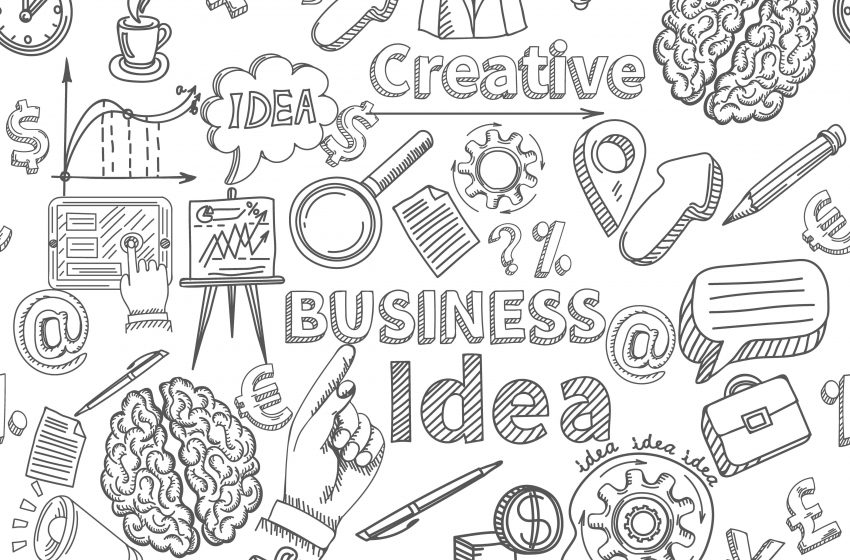
Innovating from necessity The business-building imperative in the current crisis
The rapid, global spread of COVID-19 has unleashed what is possibly the biggest shock to our lives and livelihoods in nearly a century. While COVID-19 is above all a humanitarian crisis, businesses have also suffered as economies skid to a near halt. But already, there are signs of creative business building, as companies respond to the crisis with innovative solutions born of necessity. They are throwing out the old assumptions that govern how they do business, as they rethink how to interact with customers and employees, are required to build more resilient supply chains, and reexamine attitudes toward privacy and data sharing.
That ability to envision new ways of operating will be crucial to weathering the crisis. Those that succeed will set the tone for the next normal that will follow and define the subsequent generation of paradigms for consumer and corporate behavior. These will become the operating structure for the next decade.
Companies that hope to lead in this world should ask themselves some fundamental questions:
- How will your customer needs change as we head into a post-crisis “new normal”?
- How will you create human-like interactions with customers you will never meet?
- How will you repair devices you can’t touch or hold?
- How will you find your next digital star employee who sits across the globe and is in a different industry?
- How will you create resilience in your supply chain, without tying up more capital?
- How will you shift your costs and operations to variable structures to handle an increasingly volatile and dynamic world?
- How will you bring out digital products in days or weeks, as your competitors are trying to do?
These questions are second nature to disruptive business builders, who are used to overturning assumptions and innovating in the space left when an old assumption is removed. They know that a crisis of this scale brings seismic shifts, changing the expectations for business and creating new opportunities to innovate. They are formulating new solutions to both help resolve the crisis and reimagine their industries in the aftermath. We know there is no going back to the way things were. The goal now is to define the best possible next normal for when the crisis subsides.
Business building for the crisis and beyond
We believe the COVID-19 crisis will be a period of substantial business building and innovation. The earliest signs of this are already visible, including the following:
- Overnight digital transformation. Faced with guidance on social distancing and increased patient concerns for most in-person doctor/patient consultations, the United Kingdom’s National Health Service (NHS) had to orchestrate an immediate shift to video consultations and telemedicine, an enormous undertaking. In select catchment areas, we have seen long-term telehealth plans executed in 15 days or less. With one of the world’s largest organizations able to build a robust digital capability almost overnight, old assumptions about what it takes to go digital are being rapidly overturned.
- Making the most of data. Researchers tracking the spread of infection have discovered that some people are willing to share their data for a crucial cause. South Korea’s Corona 100m app, which alerts users when they are within 100 meters of locations visited by COVID-19 carriers, is one example. After the app was released, a million South Koreans downloaded it in the space of ten days. A similar app in the United Kingdom relied on voluntarily submitted data from public users. These innovations show greater ingenuity in using data that are already being generated but not used to their fullest, and could potentially fuel a shift in the public attitude toward privacy.
- Virtual customer engagement. As the COVID-19 crisis wore on in China, the real estate market, like other sectors, suffered a rapid decline as the buying public sequestered itself at home. The Evergrande Real Estate Group, China’s second-largest real estate developer, responded by creating a digital-only experience, allowing customers to engage entirely online and make refundable deposits on properties, overturning long-held assumptions about the need for in-person meetings. Evergrande saw sales soar by 118 percent in February after it launched the new application. Along with others, the firm is pushing on how much of the customer journey can be handled remotely and how much data can be shared.
All of these business builders recognize the world is changing and the rules are being rewritten. This is one of the most important elements of business building.
Business building to reimagine the future: Six archetypes
A crisis like the one we’re experiencing now is by definition unpredictable. We can’t know with certainty the duration or the severity, but we can begin to think about what the next normal might look like by inferring patterns from past crises.
First, we know this crisis, like the ones that came before, will leave a lasting mark on the world. Not all the changes and innovations that business builders are introducing to the world now will stick, but many will, despite the fact that many would never have been considered pre-crisis. We will not go back to the old ways of doing things.
Second, there is a pattern to the types of innovators that emerge from a crisis, linked to the types of assumptions that they overturn.
We have seen both of these phenomena before. From the global financial crisis, for example, assumptions about the use of assets and nature of ownership were radically overturned. Businesses became comfortable sharing assets and cocreating with customers and even competitors, and the sharing economy was born. From this archetype of “asset sharer” came some of the world’s most successful businesses, all launched in 2008–09, including Airbnb and Uber. A similar archetype emerged around the “gig economy,” which Uber also represented, along with Instacart, TaskRabbit, and others. Both these archetypes have persisted long after the financial crisis was resolved.
Already, we can see companies, pushed by necessity, starting to overturn assumptions about the way organizations and consumers operate. Out of this, we have identified six early archetypes for post-crisis business builders:
- The remote services provider. The COVID-19 crisis forced a wholesale shift to online provision for essential services providers such as doctors and teachers. In many countries, online medical consultations and online education have become the norm. Expect this trend to spread well beyond exam rooms and classrooms. Lawyers, architects, and marketers are all beginning to deliver their services in new ways, ranging from basic videoconferencing to virtual reality and automation. Stocks in some of the technology providers have more than doubled since the start of the crisis. It’s one thing to deliver intellectual services this way—we also anticipate this trend will extend to equipment maintenance and other services we think of as in-person only. Imagine if home appliances such as dishwashers were built in a way that nonexpert homeowners could swap out a modular part as easily as they swap out printer cartridges.
- The collaboration platform. The opportunity for collaboration platforms has been building for years, but the need to self-isolate has been a catalyst. Customers and companies are gaining an appreciation for the rich interaction possible between people separated by geography but connected by technology. Online videoconferences, both for professional and social communication, are one example. Expect collaboration platforms to emerge that move beyond communication and education to areas such as talent development and evaluations, or that are tailored to other professions, such as lawyers, accountants, and engineers.
- The dynamic talent deployer. Post crisis, recruiters will develop new ways to tap the global talent pool, using technology in new ways to source specialists around the world, speed the application process, and smooth labor imbalances. This becomes especially important as talent becomes both more mobile and more virtual. The retailer Woolworths, for example, which needs to hire thousands for its surging grocery business, is exploring offering short-term work, through a streamlined application process, to some of the 20,000 Qantas employees who have been temporarily stood down as a result of the crisis. Many companies are learning now about reskilling at scale, and unorthodox partnerships could become the basis for more agile approaches to talent in the future.
- The high-touch digital retailer. New retail categories that have traditionally required a high-touch experience, because of either the customer base or category itself, will migrate online. The need to self-isolate has driven greater demand for high-end food kits. The United Kingdom’s Mindful Chef, for example, saw a 452 percent increase in sales during the first weeks of the crisis. We believe new swaths of customers, such as the elderly who previously did not leverage technology to the same degree as younger cohorts, and new sectors, such as groceries, will increasingly turn to online sales. Other areas, such as real estate, will take on more of a retail feel and also move online. The coronavirus gave an enormous boost to a variety of real estate services, from virtual home tours to virtual tours led by robots. Real estate start-up Zenplace, for example, has seen a 293 percent increase in interest in its smart automated lockboxes and self-guided home tours since early March. Improvements in technology and the use of artificial intelligence (AI) and analytics to deliver ever finer customer insights will drive this trend.
- The data visionary. With fewer people working on site, companies are taking a closer look at data they generate that was previously deemed to be of limited value. They are finding ways through analytics and automation to use that data for functions such as monitoring machinery, a task previously handled by on-site workers that can now happen remotely. In addition, providers are emerging who can combine the data from multiple companies to provide sector-level insights. This has emerged in particular during the crisis in the case of alternative data providers, such as Thasos, who have seen a surge in requests as corporates and investors seek to inform their decisions with previously underused data sources such as real-time mobile location data.
- The resilient and flexible but not redundant operator. The COVID-19 crisis has thrown into sharp relief the vulnerability of global supply chains. Emerging from the crisis, we will see a cadre of organizations that differentiate through resilient supply chains and operations, without having to tie up excessive capital. AI is playing a large role in enabling this. In addition, these organizations are flexible with a variable cost base and ready to respond to dynamic changes in an increasingly volatile world. This new model is helping companies with better forecasting too. Blue Yonder, for example, one of the world’s largest flexible fulfillment providers, has been drawing feeds from the Centers for Disease Control and Prevention (CDC) into its machine-learning platform to better enable its customers to manage the COVID-19 supply-chain shock. Digital tools are also helping companies identify new sources of resiliency—for example, through digitally clustering potential suppliers according to the capabilities that they have in common. Estimating a medtech company’s degree of connectedness, for instance, helped it expand its supplier base by 600 percent.
Jason Bello is a partner in McKinsey’s Washington, DC, office; Shaun Collins is an associate in the Boston office; Ralf Dreischmeier is a senior partner in the London office; and Ari Libarikian is a senior partner in the New York office.
Source: https://www.mckinsey.com/business-functions/mckinsey-digital/our-insights/innovating-from-necessity-the-business-building-imperative-in-the-current-crisis



